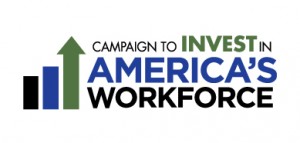![]()
As the economy continues to change with digitalization and automation, the needs of the labor market will continue to change too. In 2019 the U.S. Chamber of Commerce Foundation commissioned a study surveying 500 human resource (HR) professionals with hiring decision authority in their organizations. An overwhelming 74 percent of respondents said that a “skills gap” persists in the current U.S. labor and hiring economy.
These employers cite three major challenges they face when hiring: candidates lacking the appropriate or necessary skills, candidates lacking previous relevant work experience and not having enough applicants. According to these HR professionals, addressing the skills gap and truly transforming the talent marketplace would require:
1) Greater upskilling initiatives within companies for existing employees.
2) More educational/Career Technical Education (CTE) programs to build talent pipelines.
3) Improving alignment between skills and competencies taught in educational/CTE programs and in-demand skills and competencies needed in the workforce.
A study by JFF further highlights the skills gap and the challenges to solving the problem. The report, Making College Work for Students and the Economy, follows JFF’s comprehensive policy agenda for addressing states’ skilled workforce and talent development needs. The report examines a representative sample of 15 states to determine their progress toward adopting 15 policy recommendations. Of the recommendations made in their initial report, states have made the most progress on the following:
1) Establishing expectations that community college programs align to labor market demand.
2) Developing longitudinal data systems that provide the ability to track over time the educational and employment outcomes of students.
3) Addressing barriers to college readiness.
Conversely, JFF finds that states have the most work to do in the following areas:
1) Providing community colleges with sufficient resources and appropriate incentives.
2) Addressing the holistic needs of students to strengthen their financial stability.
3) Digging into labor market outcomes of students and postsecondary programs.
Both the U.S. Chamber of Commerce Foundation and the JFF studies highlight a need for state governments, the education sector and the labor sector to work collaboratively and do more to prepare the 21st century workforce to meet the needs of an ever-changing labor market.
With implementation of the Strengthening Career and Technical Education for the 21st Century Act (Perkins V) underway, states are poised to make transformational changes to improve the quality of CTE programs and ensure equitable access and success. Opportunities like the comprehensive local needs assessment and the Perkins V reserve fund give state leaders leverage to ensure programs are meeting the needs of learners and employers.
Research Roundup
- The University of Michigan Youth Policy Lab released a report last month finding disparities in access to CTE programs for economically disadvantaged learners and learners of color throughout the state. However, the report found that when CTE is offered in a single high school, there is very little disparity. This suggests that there is broad interest in CTE programs when offered and that states should do more to expand access for low-income and Black and Hispanic learners.
- A report from Georgetown University’s Center on Education and the Workforce finds that students enrolled in certificate and associate degree programs make up 50 percent of the postsecondary student population. Students graduating with certificates in fields such as engineering and drafting can earn a median income up to $150,000. Black, Hispanic and low-income students were most likely to enroll in a certificate program. These findings suggest that certificate and associate degree programs can have great potential in closing earnings and opportunity gaps.
Brian Robinson, Policy Associate


